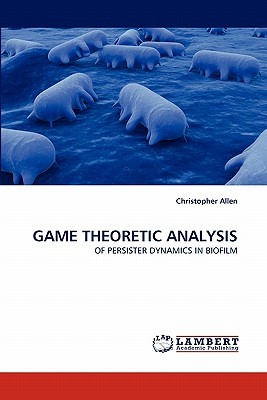
- We will send in 10–14 business days.
- Author: Christopher Allen
- Publisher: LAP Lambert Academic Publishing
- ISBN-10: 3844300333
- ISBN-13: 9783844300338
- Format: 15.2 x 22.9 x 0.4 cm, softcover
- Language: English
- SAVE -10% with code: EXTRA
Reviews
Description
Biofilms have always been known for resistance to antibiotic treatment. There are many reasons for this ability to survive. Some bacteria, once they infect a host, elect to take on a 'planktonic', or nomadic, lifestyle in order to maximize nutrient availability. Others, however, elect to congregate with other microorganisms, settling in one area and creating a single 'sessile' organism in order to provide mutual protection for the entire colony. In fact, the act of collecting many different bacteria into a single organism makes the entire colony about "500 times more resistant to antibacterial agents" (Costerton, et al.) than a single planktonic bacterium that simply settles on a surface. The main reason that biofilm is so much more resistant to antibiotic treatment than its planktonic counterpart is that biofilm microorganisms tend to specialize in each others' functions, allowing for reduced antibiotic penetration, the expression of biofilm-specific genes, and the specialization of certain cells into a more dormant form of existence called persister cells (Lewis).
EXTRA 10 % discount with code: EXTRA
The promotion ends in 19d.16:15:04
The discount code is valid when purchasing from 10 €. Discounts do not stack.
- Author: Christopher Allen
- Publisher: LAP Lambert Academic Publishing
- ISBN-10: 3844300333
- ISBN-13: 9783844300338
- Format: 15.2 x 22.9 x 0.4 cm, softcover
- Language: English English
Biofilms have always been known for resistance to antibiotic treatment. There are many reasons for this ability to survive. Some bacteria, once they infect a host, elect to take on a 'planktonic', or nomadic, lifestyle in order to maximize nutrient availability. Others, however, elect to congregate with other microorganisms, settling in one area and creating a single 'sessile' organism in order to provide mutual protection for the entire colony. In fact, the act of collecting many different bacteria into a single organism makes the entire colony about "500 times more resistant to antibacterial agents" (Costerton, et al.) than a single planktonic bacterium that simply settles on a surface. The main reason that biofilm is so much more resistant to antibiotic treatment than its planktonic counterpart is that biofilm microorganisms tend to specialize in each others' functions, allowing for reduced antibiotic penetration, the expression of biofilm-specific genes, and the specialization of certain cells into a more dormant form of existence called persister cells (Lewis).


Reviews